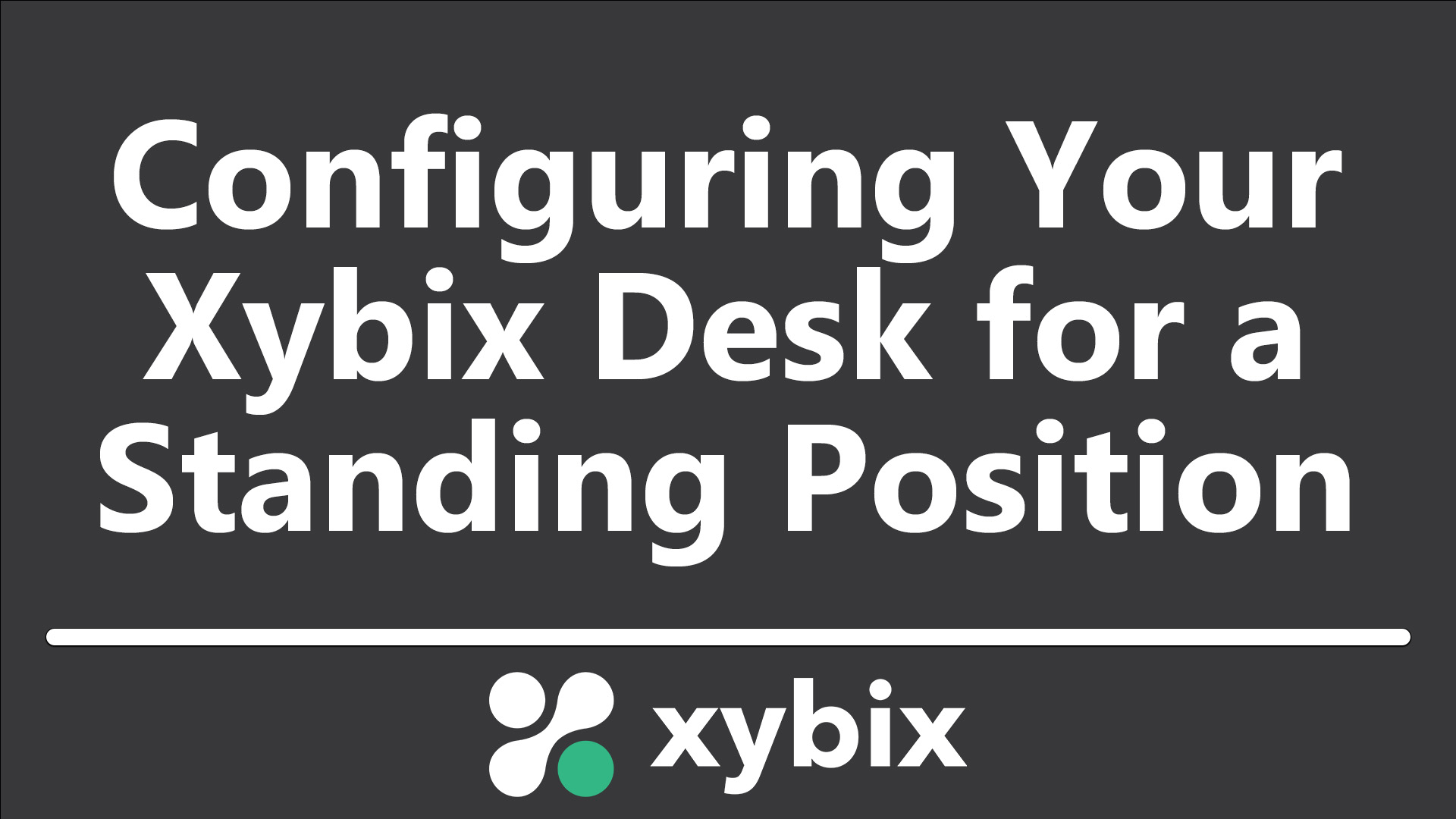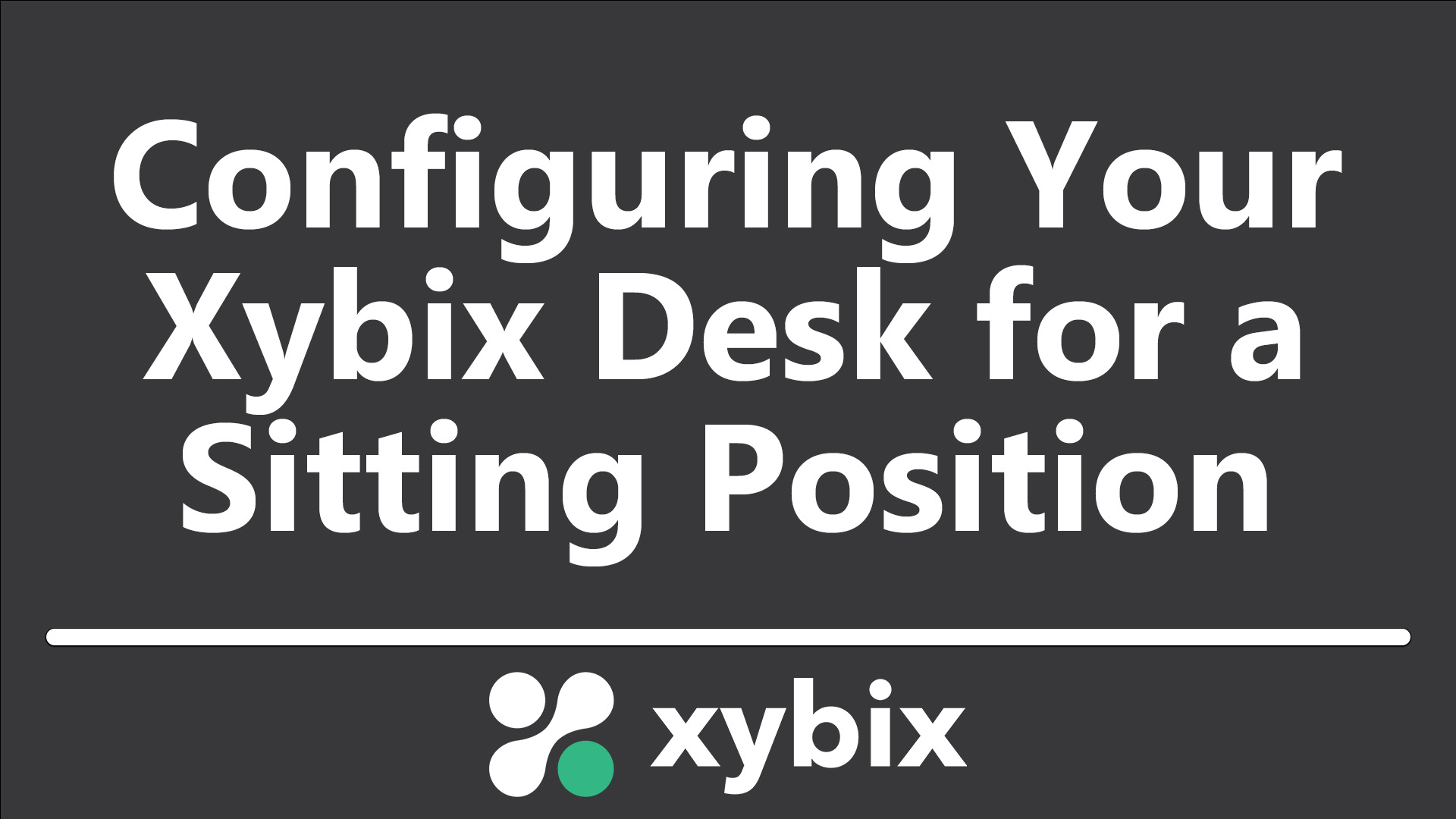
My friend Alex invented a new sport: Extreme Standing. When she got a sit-to-stand desk from our MojoDesk division last year, she loved it immediately. As a CFO, Alex had no problem crunching numbers on a laptop, whether she was at home on a sofa, sitting in a coffeeshop or standing at her desk. She especially loved standing. But then the back pain set in…
When Alex mentioned the back pain, I asked about her sit-to-stand ratio throughout the day. That’s how I found out she was standing up to 10 hours a day, never lowering the desk to sit. Her sit-to-stand desk was functioning as a laptop stand. Given the time we devote to ergonomics here at Xybix and MojoDesk, I felt qualified to offer up a few tips on using the desk. I’m happy to report that the Extreme Standing champion’s back pain quickly subsided once she balanced out her sit-to-stand ratio.
I want to share these tips now because so many of us are on a fitness journey, whether inspired by New Year’s resolutions, striving for that pre-pandemic body or simply getting healthier. A sit-to-stand desk from MojoDesk or Xybix can be a part of that journey—as long as you don’t take standing to the extreme.
Strive for a 1:1 Ratio
The consensus on a healthy sit-to-stand ratio is 1:1—meaning that for every hour you stand, you should sit for an hour. Setting a goal of standing half the day is entirely doable, especially if you alternate sitting and standing throughout the day. While your work may dictate how often you can change positions without losing focus, try to stand for no more than 30 to 60 minutes at a time. In the interest of moderation, be sure to build up to standing half the day over a few weeks.
Pay Attention to Ergonomics
While you’re standing, pay careful attention to your desk height and body position. Raise the desktop so that your forearms can rest on the desk when your arms are bent 90° at the elbow. (Ideally, do not actually rest your arms while typing—instead, allow your hands to float over the keyboard.) Any screens on the desk should be positioned so that your eyes are at the top ¼ of the screen, gazing down about 15° to 20° from level. Remember or program your desktop height setting so you can quickly get it right every time.
Standing at your desk is not like standing around with a shopping cart or cocktail in hand. You need to stand up straight—not with a hip cocked or a foot turned to the side but also not in that locked-knees, at-attention posture of a grade school picture. Focus on the following:
- Stand evenly on your feet
- Place your feet hip distance apart
- Point your toes forward
- Keep your legs straight but don’t lock your knees (I like to sway to music)
- Keep your neck tall and shoulders relaxed
- Keep your head, neck and spine in a straight line
A great thing about standing is that you can dance around a bit and stretch. While you’re focusing on work, however, chances are you’re standing still and you want to be sure that the posture you settle into is right for your body.

 |
 |
Cushion Your Feet
If you’re standing half the day—even with the best posture—your footwear and flooring will affect how you feel. Consider cushiony shoes and an anti-fatigue mat, provided that it won’t become a trip hazard.
So, that’s how you avoid Extreme Standing while still reaping the benefits of your sit-to-stand desk: follow a 1:1 ratio of sitting to standing, watch your desk height and posture, and cushion your feet. Happy standing!



